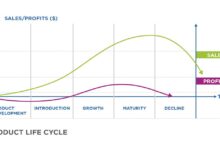Sales Drawing: 7 Powerful Steps to Skyrocket Your Revenue
Ever wondered how top sales teams close deals faster and more effectively? The secret might not be in their pitch—but in their visuals. Enter the world of sales drawing, a game-changing technique that turns abstract ideas into compelling, persuasive visuals.
What Is a Sales Drawing and Why It Matters

A sales drawing is more than just a sketch on a whiteboard. It’s a strategic visual tool used during sales presentations to illustrate value propositions, product benefits, and customer pain points in real time. Unlike static slides, a sales drawing engages the buyer’s brain through motion, storytelling, and interactivity—making complex ideas easier to grasp and remember.
According to research from the Visual Teaching Center, people retain 65% of visual information compared to only 10% of spoken content after three days. That’s why sales drawing has become a powerful weapon in the arsenal of modern sales professionals. It’s not about artistic talent—it’s about clarity, connection, and conversion.
The Psychology Behind Visual Selling
Human brains are wired to respond to visuals. When a salesperson draws a concept—like a customer journey map or a solution architecture—it activates multiple cognitive processes: attention, memory, and emotional engagement. This multi-sensory experience makes the message stick.
- Visuals reduce cognitive load by simplifying complex information.
- Drawing in real time creates a sense of co-creation with the client.
- The act of drawing builds trust and demonstrates expertise.
Neuroscience supports this: mirror neurons fire when we watch someone draw, making us feel like we’re part of the process. This emotional alignment increases the likelihood of agreement and buy-in.
How Sales Drawing Differs From Traditional Sales Tools
Traditional sales tools like PowerPoint decks are often one-way communication. They’re pre-made, rigid, and can feel impersonal. In contrast, a sales drawing is dynamic and adaptive. It evolves based on client feedback, questions, and objections in real time.
For example, while a slide might say “Our platform integrates with your CRM,” a sales drawing can show how data flows between systems, where bottlenecks are eliminated, and how the client’s team saves hours per week. This level of detail, drawn live, makes the value tangible.
As Neil Rackham, author of SPIN Selling, notes:
“The most effective sales presentations are not about information—they’re about insight.”
Sales drawing delivers insight through visual storytelling.
The 7 Key Steps to Mastering Sales Drawing
Becoming proficient in sales drawing doesn’t require an art degree. It requires structure, practice, and purpose. Follow these seven steps to transform your sales conversations from monologues into collaborative visual journeys.
Step 1: Start With a Clear Objective
Before you pick up a marker, ask: What do I want the client to understand, feel, or decide by the end of this drawing? Your objective should align with the stage of the sales cycle.
- Discovery phase: Draw the customer’s current workflow to validate understanding.
- Presentation phase: Illustrate how your solution solves their specific pain points.
- Negotiation phase: Map out ROI over time to justify investment.
Without a clear goal, your drawing becomes cluttered and confusing. Keep it focused. One idea per drawing.
Step 2: Use Simple, Universal Visual Language
You don’t need to be Picasso. In fact, overly detailed drawings can distract. Use basic shapes—boxes, arrows, stick figures, clouds, and circles—to represent people, processes, systems, and emotions.
For instance:
- A box = a department or system
- An arrow = data flow or process step
- A lightning bolt = pain point or bottleneck
- A lightbulb = innovation or solution
Consistency is key. Use the same symbols across meetings so clients begin to recognize your visual shorthand. This builds familiarity and speeds up comprehension.
Step 3: Tell a Story, Not a Diagram
The most effective sales drawings follow a narrative arc: problem → struggle → solution → outcome. This mirrors the hero’s journey and keeps the client emotionally engaged.
Example: Start with a stick figure labeled “Marketing Team” drowning in paperwork (problem). Draw red X’s over manual tasks (struggle). Then introduce a cloud labeled “Our Automation Tool” that clears the clutter (solution). Finally, show the same figure smiling, holding a trophy labeled “30% Time Saved” (outcome).
Story-driven visuals are 22x more memorable than facts alone, according to Gartner’s research on insight selling.
Step 4: Involve the Client in the Drawing
Passive observation leads to passive decisions. Active participation leads to ownership. Invite the client to contribute: “Where would you place the approval step?” or “Should this team be involved earlier?”
When clients co-create the drawing, they’re more likely to defend it later in internal meetings. This is known as the IKEA effect—people value things more when they’ve helped build them.
“The best sales drawings aren’t drawn by the seller—they’re drawn with the buyer.”
Step 5: Keep It Live and Unpolished
Resist the urge to pre-draw or use digital templates. The power of sales drawing lies in its imperfection. A live sketch feels authentic, responsive, and human.
Pre-made visuals signal: “I’ve seen this before.” A live drawing says: “This is for you, right now.”
If you’re using a digital whiteboard like Miro or Microsoft Whiteboard, draw freehand. Avoid dragging pre-made icons. Let the lines be rough. It shows you’re thinking, not just presenting.
Step 6: Anchor the Drawing to Business Value
Every element in your sales drawing should tie back to a business outcome: cost savings, risk reduction, revenue growth, or customer satisfaction.
For example, if you draw a faster approval process, add a dollar figure: “Saves $48K/year in labor.” If you illustrate reduced downtime, write: “Increases uptime by 40%, boosting customer retention.”
Numbers transform visuals from interesting to irresistible. As Harvard Business Review found, trust increases when data and emotion are combined—exactly what a well-crafted sales drawing achieves.
Step 7: Capture and Follow Up
At the end of the meeting, take a photo or screenshot of the drawing. Turn it into a one-page summary and send it as part of your follow-up email.
Label the key elements and add a call to action: “Next step: Pilot launch on June 10.” This keeps the conversation alive and gives the client a tangible artifact to share with stakeholders.
Pro tip: Store these drawings in your CRM as visual notes. Over time, they become a library of proven sales narratives.
Real-World Examples of Sales Drawing in Action
Theory is great, but results matter. Let’s look at how real companies have used sales drawing to win deals, shorten sales cycles, and increase deal size.
Tech Company: Selling Complex SaaS Integration
A B2B SaaS provider was struggling to explain how their platform integrated with legacy ERP systems. Slides were ignored; demos were overwhelming.
Solution: The sales team started using a whiteboard to draw the client’s current data flow (messy, with red X’s), then slowly redrew it with their tool as the central hub. They used color-coded arrows to show real-time sync and error reduction.
Result: Deal cycle shortened by 35%, and win rate increased by 28% in six months. Clients said, “Finally, someone showed us how it actually works.”
Consulting Firm: Mapping Organizational Change
A management consultancy was pitching a digital transformation project. The client’s leadership was skeptical about disruption.
Solution: The consultant drew a timeline: “Current State” (chaotic, with overlapping roles), “Transition Phase” (with training and support), and “Future State” (streamlined, with clear ownership). They used stick figures to represent teams and added speech bubbles: “Confused” → “Trained” → “Empowered.”
Result: The client approved the project within a week. The CFO said, “That drawing made the change feel manageable.”
Manufacturing Sales: Visualizing ROI on Equipment Upgrade
A sales rep for industrial machinery needed to justify a $250K investment. ROI calculations were buried in spreadsheets.
Solution: He drew a side-by-side comparison: Old Machine (slow, high maintenance, frequent downtime) vs. New Machine (fast, automated, predictive maintenance). Under each, he added dollar signs: “$18K/month lost” vs. “$7K/month saved.”
He ended by drawing a growing bar graph labeled “Cumulative Savings” reaching $84K by Year 1. The client signed the order the next day.
Tools and Technologies for Modern Sales Drawing
While a simple whiteboard and marker can work wonders, digital tools have expanded the reach and impact of sales drawing—especially in remote and hybrid sales environments.
Digital Whiteboards: The New Sales Floor
Platforms like Miro, Microsoft Whiteboard, and Google Jamboard allow real-time collaboration across geographies.
- Enable screen sharing with annotation during video calls.
- Save and reuse templates for common sales scenarios.
- Integrate with CRM systems like Salesforce for seamless follow-up.
Best practice: Use a stylus or touchscreen for natural drawing. Avoid mouse-based input—it looks robotic and slows you down.
Tablet and Stylus Combos for On-the-Go Drawing
Sales reps in field sales are using iPads with Apple Pencil or Microsoft Surface devices to create instant visuals during client visits.
Apps like Jamboard, Miro for iPad, and Conceptboard make it easy to sketch, save, and share.
One pharmaceutical sales rep reported that using an iPad to draw patient journey maps increased engagement by 60% compared to printed brochures.
AI-Powered Drawing Assistants
Emerging AI tools can now suggest visual layouts based on your sales script. For example, Tome and MURAL use AI to recommend story flows and visual metaphors.
While not a replacement for human insight, these tools can accelerate preparation and ensure consistency across teams.
Common Mistakes to Avoid in Sales Drawing
Even with the best intentions, sales professionals can undermine their efforts with poor execution. Here are the most common pitfalls—and how to avoid them.
Mistake 1: Overcomplicating the Drawing
Trying to show everything at once leads to visual chaos. A cluttered board confuses rather than clarifies.
Solution: Apply the “one idea per drawing” rule. If you need to explain multiple concepts, use a series of simple drawings instead of one complex one.
“Simplicity is the ultimate sophistication.” — Leonardo da Vinci
Mistake 2: Drawing Without a Plan
Winging it can make you look unprepared. Even if you’re drawing live, have a mental or physical template ready.
Solution: Prepare 3-5 core drawings for your most common sales scenarios. Practice them until they feel natural.
Mistake 3: Ignoring the Client’s Input
A drawing that doesn’t reflect the client’s reality will fail to resonate.
Solution: Start by asking, “How does this process work for you today?” Then draw what they describe—before introducing your solution. This builds credibility and trust.
Training Your Team in Sales Drawing
Sales drawing isn’t just for elite reps. With the right training, any sales professional can learn this skill. Here’s how to scale it across your organization.
Create a Visual Playbook
Document your most effective drawings and the stories behind them. Include:
- Objective of each drawing
- Key symbols used
- Client reactions and outcomes
- Follow-up actions
This playbook becomes a training resource and ensures consistency in messaging.
Run Interactive Workshops
Host hands-on sessions where reps practice drawing common scenarios. Use role-playing: one person plays the client, another the sales rep.
Focus on feedback, not perfection. Celebrate effort and improvement.
Measure Impact and Iterate
Track metrics before and after implementing sales drawing:
- Sales cycle length
- Win rate
- Deal size
- Client satisfaction scores
Use this data to refine your approach and prove ROI to leadership.
The Future of Sales Drawing: Trends to Watch
As sales becomes more digital and data-driven, sales drawing is evolving—not disappearing. Here are the trends shaping its future.
Integration With CRM and Sales Enablement Platforms
Soon, your CRM might suggest a drawing based on the client’s industry or pain points. Salesforce and HubSpot are already exploring AI-driven visual recommendations.
Imagine: You log into your CRM, select a prospect, and it generates a custom whiteboard template with pre-filled context—ready for your live session.
Augmented Reality (AR) for Immersive Selling
Companies like Microsoft HoloLens and Apple Vision Pro are enabling 3D sales drawings in physical spaces.
A construction equipment seller could project a life-size model of a machine onto a job site, then draw maintenance workflows in mid-air. This is the next frontier of sales drawing—literally.
AI-Generated Visual Narratives
AI tools will soon analyze call transcripts and automatically generate visual summaries for follow-up. These could be turned into animated sales drawings for email or video.
The human touch will remain essential, but AI will handle the heavy lifting of data visualization.
What is a sales drawing?
A sales drawing is a visual representation created during a sales conversation to illustrate a problem, solution, or value proposition. It’s drawn in real time to engage the client, simplify complex ideas, and build consensus.
Do I need to be good at drawing to use this technique?
No. Sales drawing relies on simple shapes and symbols, not artistic skill. Clarity and relevance matter more than aesthetics. Stick figures and boxes are perfectly effective.
Can sales drawing be used in virtual meetings?
Absolutely. Digital whiteboards like Miro, Microsoft Whiteboard, and Google Jamboard allow real-time collaboration during video calls. The key is to draw live, not just share static images.
How do I measure the effectiveness of sales drawing?
Track metrics like win rate, sales cycle length, and client feedback. Compare performance before and after implementing sales drawing. Also, monitor engagement during meetings—do clients ask more questions or contribute more when you draw?
What industries benefit most from sales drawing?
Any industry that sells complex solutions can benefit—especially SaaS, consulting, manufacturing, healthcare, and financial services. However, even simple products can be enhanced with visual storytelling to differentiate from competitors.
Sales drawing is not a gimmick—it’s a strategic communication tool that bridges the gap between logic and emotion, data and story, seller and buyer. When done right, it transforms sales from a transaction into a collaboration. By mastering the seven steps outlined here, avoiding common mistakes, and leveraging the right tools, you can make every sales conversation more engaging, memorable, and successful. The future of selling isn’t just about what you say—it’s about what you show.
Further Reading:



